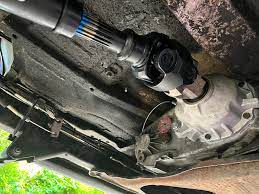Driveshaft vibrations affect smooth vehicle motion greatly. They create noise and shaking. Drivers notice unusual movement during acceleration. Small vibrations can worsen quickly over time. Identifying problems early prevents major repairs. Regular attention protects expensive vehicle components. Vehicles feel safer when motion is stable. Vibrations often indicate hidden mechanical issues. Professional inspection ensures accurate fault detection. One must act fast to avoid serious damage.
Common Causes of Driveshaft Vibrations
Worn universal joints cause unstable rotation patterns. Bent drive shafts produce uneven motion while driving. Imbalanced driveshaft components trigger shaking on roads. Loose mounting bolts reduce mechanical stability significantly. U-joint wear often starts with minor noise. Vibrations can spread to other vehicle parts. Heavy duty vehicles suffer these problems frequently. Incorrect alignment worsens vibration problems over time. Proper diagnosis at a trusted Auto Repair in Johnstown, OH helps mechanics fix issues fast. Early replacement prevents severe vehicle breakdowns reliably.
Symptoms to Observe
Shaking increases when vehicles reach higher speeds. Clicking sounds often indicate universal joint failure. Steering wheel sometimes feels heavy during driving. Floorboards transmit vibrations from mechanical faults below. Engine response can feel uneven under acceleration. Tires may vibrate when alignment is off. Drivetrain misalignment shows as irregular rotational movement. Listening closely helps detect subtle issues early. Observing patterns guides repair strategies effectively. One should check symptoms before continuing travel immediately.
Inspection Techniques
Visual inspection identifies physical damage on components. Rotating driveshaft reveals imbalances and misalignment clearly. Mechanics test universal joints for smooth operation. Measuring vibration with devices provides exact readings. Mounting points require careful checking during inspection. Any looseness or wear must be repaired quickly. Lubrication inspection ensures joints function properly always. Test runs show effectiveness of each repair step. Accurate documentation supports future maintenance planning. One must evaluate all components before confirming faults.
Repair Solutions
Replacing worn universal joints restores stable rotation. Straightening bent drive shafts corrects uneven motion issues. Balancing drive shafts removes persistent vibration problems immediately. Tightening bolts prevents additional movement and instability. Upgrading driveshaft components improves long-term vehicle reliability. Mechanics verify repairs under normal road conditions. Correct installation ensures safe driving and performance. Testing after repair guarantees vibration elimination completely. Continuous monitoring prevents repeat vibration problems in future. One should follow all steps to maintain safety.
Precautionary Actions
Regular inspections prevent unexpected vibration problems easily. Timely maintenance extends driveshaft component lifespan. Proper lubrication keeps joints functioning correctly always. Avoiding vehicle overloading protects drivetrain systems effectively. Periodic checks catch small issues before major failures. Following manufacturer guidelines improves reliability of motion. Tire and wheel inspections support vibration prevention measures.
Conclusion
Driveshaft vibrations require attention from every vehicle owner. Inspection techniques uncover hidden mechanical failures effectively. Repair solutions restore stability and consistent vehicle performance. Proper maintenance ensures safe driving under all conditions. Monitoring vibrations reduces risks during heavy vehicle use. Acting fast preserves expensive components and avoids danger. One should never ignore unusual vehicle motion signs.





